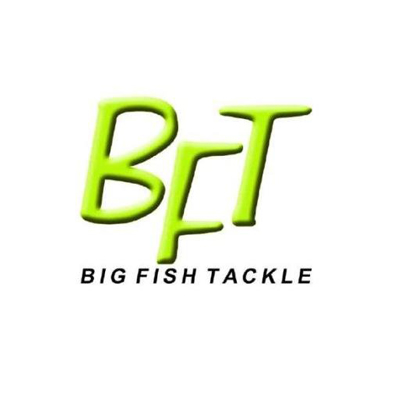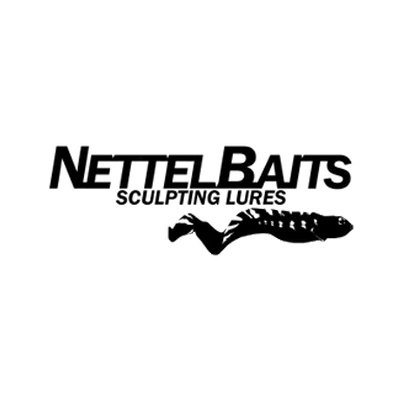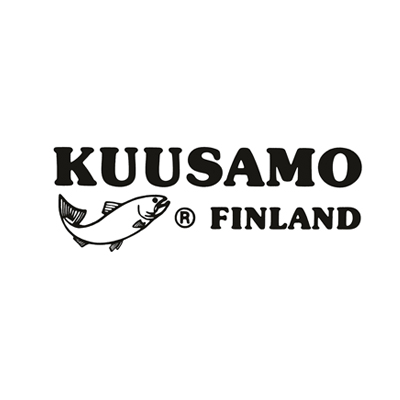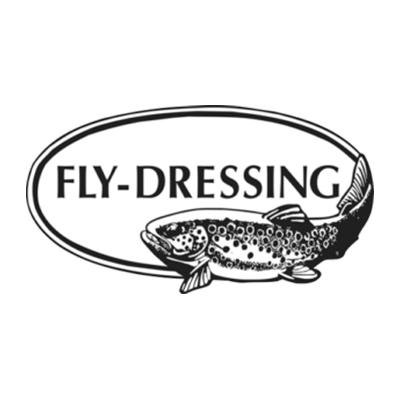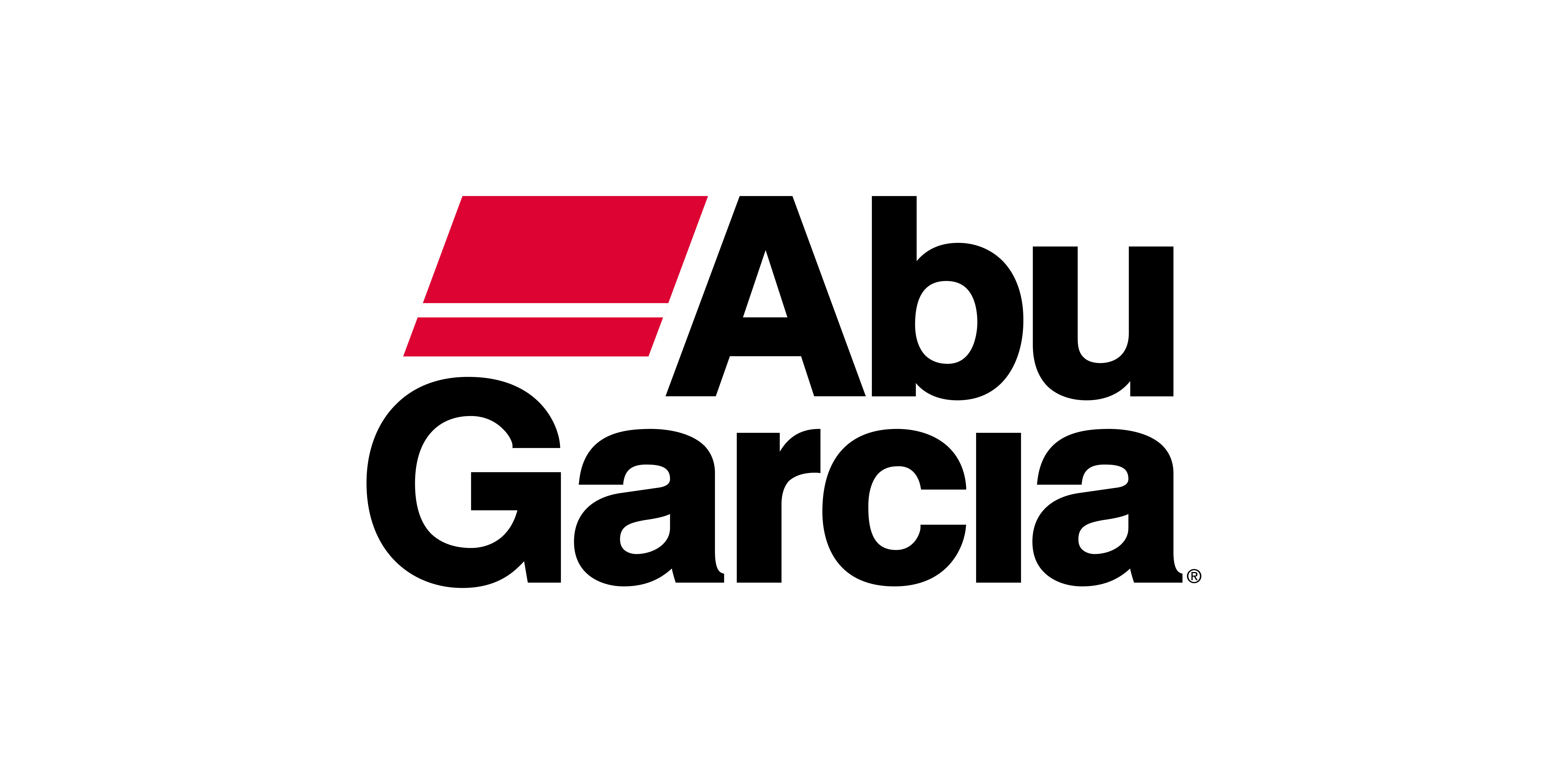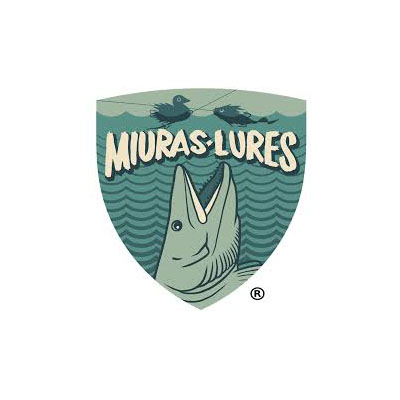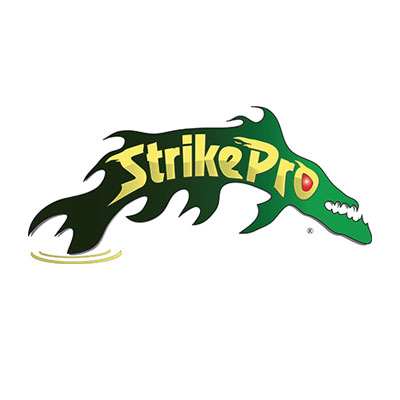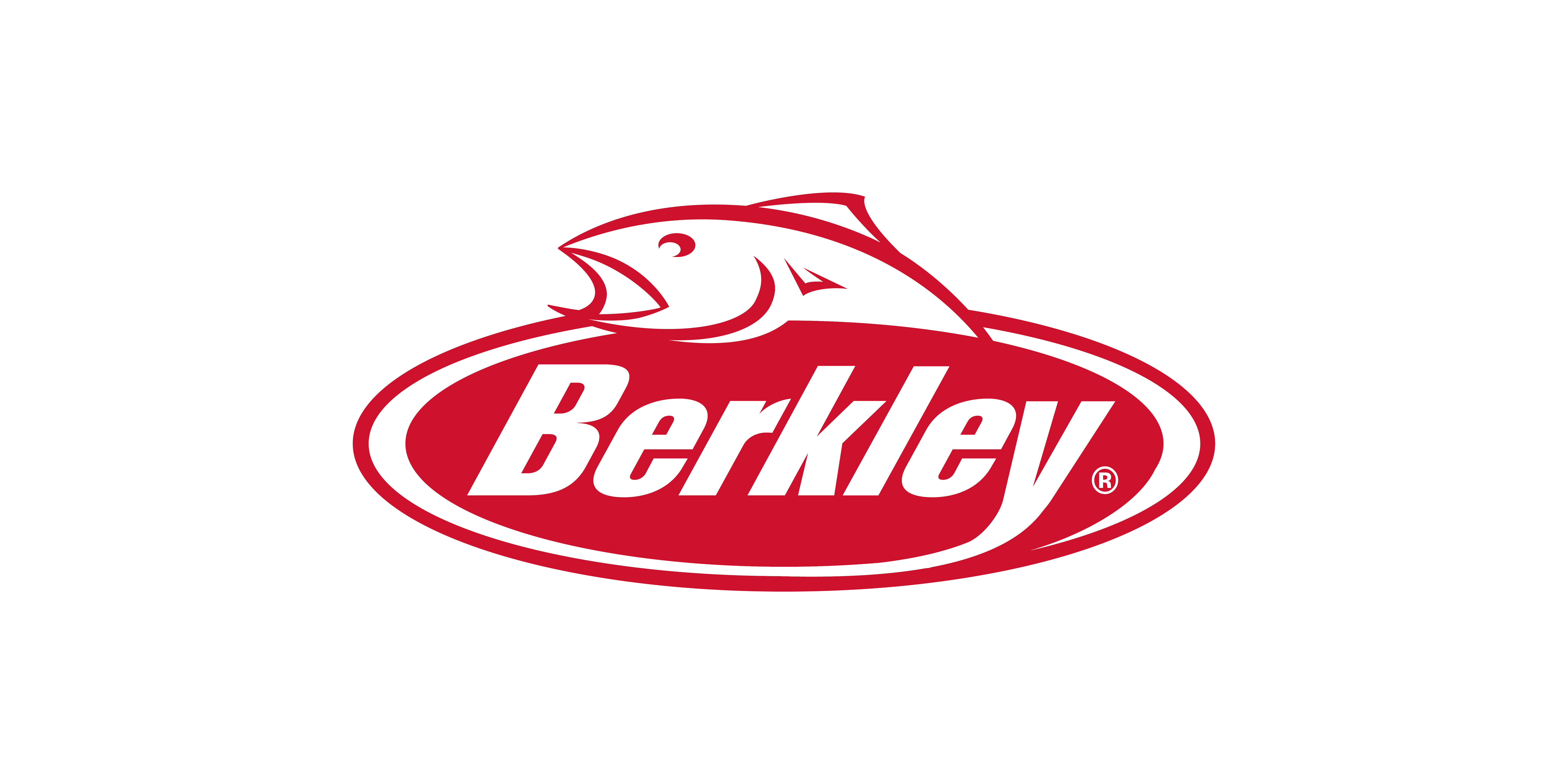Spring Pikes
Where do pikes go in the spring? Which lures can attract big pikes? How should these lures be presented depending on water temperature, wind direction, whether it's a sunny day or an overcast one? We use different lures in the morning than toward dusk. The retrieval technique also depends on several factors, which we will address below.
Early in spring, right after ice melt, is a very good time for pike fishing. Pike is the species that spawns the earliest. In general, the spawning period lasts about a month, from mid-February to mid-March, with some variation depending on weather. Immediately after the ice breaks up, pikes begin to gather in nearshore waters that warm up first, at temperatures between 5–15 °C.
Here, in shallow water full of submerged vegetation, the pike deposits its eggs. In Romania, the closed season ends on March 15; in Hungary, on March 31; while in countries like Sweden and Finland there is no such restriction.
To avoid any misunderstanding, we emphasize that the GBP Sportfishing team practices C&R (catch and release). We strongly believe we must consciously and continuously protect the environment, supporting sustainable fishing. At the same time, we do not oppose an angler keeping 1–2 pikes (no more!) for culinary purposes, but we respectfully ask that you only retain pikes between 40–75 cm. Release the smaller ones immediately, and those over 75 cm should be returned to their natural habitat after a short photo session.
With that clarified, let us move on to fishing. As mentioned already, pike spawning can last up to a month. We can distinguish three phases: pre-spawn, spawn, and post-spawn. Before spawning, pikes feed somewhat timidly; during spawning they eat little or nothing; after spawning, they regain their appetite fairly quickly as water starts to warm.
Quite often, pikes begin spawning in thawed bays while much of the lake is still covered in ice. In such cases, we can only fish the more promising nearshore areas from the bank. Big pikes start moving from deeper zones into thawed bays, seeking shallow, vegetated water, stream mouths, flooded zones, dead arms, or areas that warm more quickly. In this phase we have a higher chance to catch them, but we must keep in mind that water is still cold and fish move slowly. We must position ourselves so as to fish nearshore areas with depths of 60–90 cm, near stream inlets, calm shallow spots, or in front of channels linking flooded areas or dead arms.
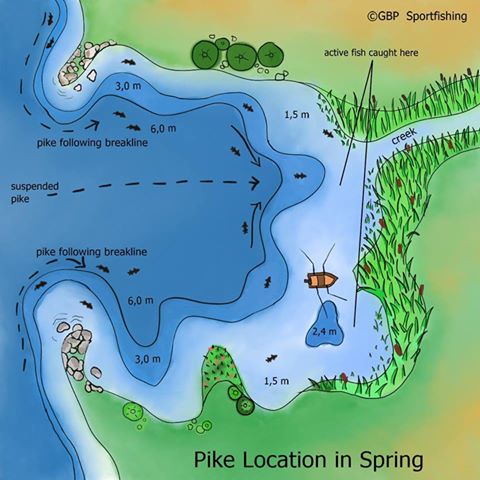
In this period, pike will often occupy “hot zones” — and there are also “key points,” places where a pike must pass as it moves toward spawning sites. Such points include entrances to bays, along shoals, funnel-like stream mouths. Likewise, promising spots are reed walls, shallow vegetated flats. Typically, spawning areas are difficult to access and fish, but that’s a plus: in such places pikes – even large ones – often congregate in surprising numbers.
During the spawning period, pikes do not feed; they are focused only on reproduction, so it’s best to leave them in peace. Generally, pikes have regular spawning areas, but larger bays with shallow water and vegetation attract more fish. Pike seeks shallow water with submerged plants, scattering its eggs over a broader area. A few weeks later, peaceful fish also spawn here, and young pikes feed on these fry. Everything in nature follows order and reason.
From the fishing perspective, we should focus on secondary areas — pikes that either have not yet spawned or big “ladies” returning to the lake that are hungry and exhausted. Hot zones are mouths of passages, reed edges, flooded zones, near stream outlets, shallow flats. The entrances to bays, along shoals, are “key points” where pikes will certainly pass. Even after spawning, pikes remain in the area and start feeding, usually when water temperature reaches 10 °C.
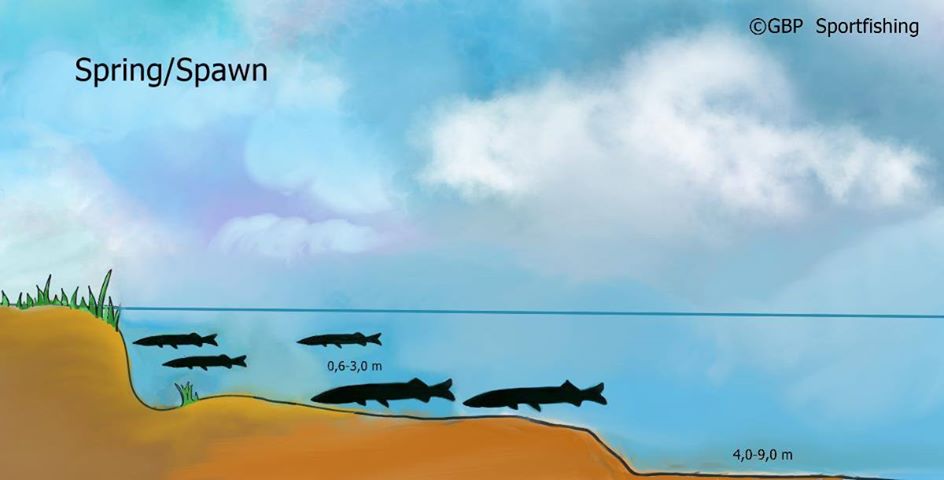
Spring is one of the best times for pike fishing, especially since the chance to catch even big pikes increases significantly. Big pikes leave deep water and stay in shallow water longer, sometimes for several weeks. After spawning, pikes remain fairly close to shore and feed aggressively. Spring might be the time with the highest chance to catch mature pikes, compared to the rest of the year.
So far we’ve discussed where pikes are in spring. Next, we turn to lures: which lures can attract big pikes, and how to present them depending on water temperature, wind direction, clear sky or overcast. We use different lures in the morning versus toward dusk. The retrieval technique also depends on many factors.
Right after ice melt, when water is still cold (~5 °C), the best lures are large soft plastics, SpinFly type lures, or Miuras Mouse. The lure must be retrieved as slowly and evenly as possible, without touching the bottom, and without jerky movements. You must not jerk, twitch, or stop it — simply retrieve slowly and uniformly.
Another important factor: do not change fishing spots too often — fish each position meter by meter. Water is still cold; pikes move slowly, in standby mode. They strike only lures that pass close to their nose and are slow enough to merit the effort.
They are migrating from deep water toward spawning areas, pass through “key points,” and often pause in “hot zones” until water warms a bit. So it’s worth insisting on these identified hot zones or key points. Unlike summer fishing, you should cast parallel to breaklines and shoals, not perpendicular. Of course, this is easier from a boat or kayak.
Anchor your boat and fish the place methodically, meter by meter, without haste. For repositioning, consider hot zones, key points, and move just within casting distance. In shallow water, avoid using the electric motor to hold position, as it disturbs fish — anchored boat fishing is more effective. In such cases, long and frequent casts bring results — as the saying goes by Claus (Svartzonker).
Some anglers prefer smaller lures, but when pike start feeding, big lures are much more effective. You’ll be surprised that even smaller pikes prefer attacking big lures in this period due to high caloric need after winter, both before and after spawning.
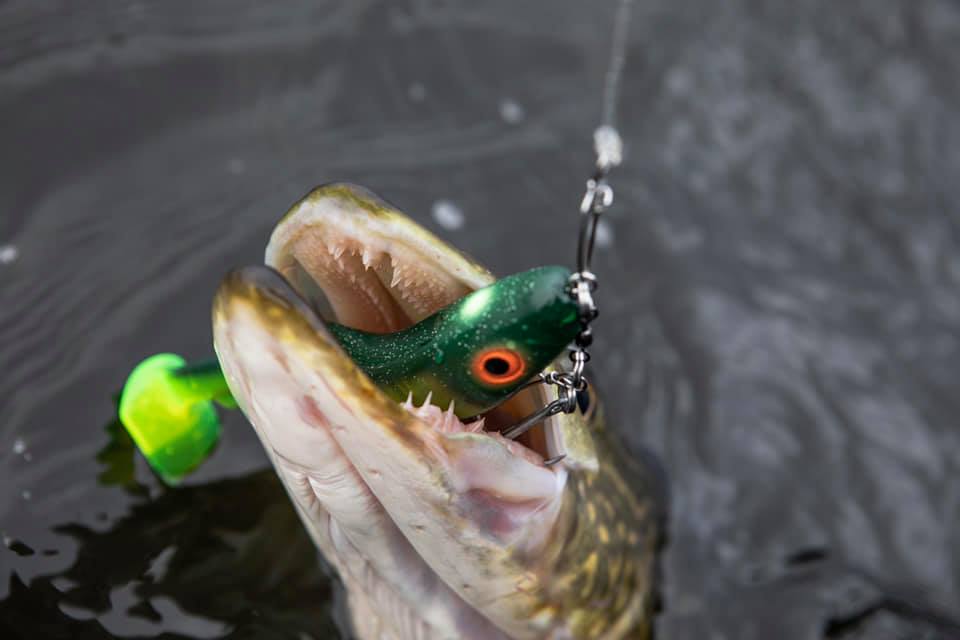
As the weather and water warm, you can speed up lure retrieval a bit with longer pauses and occasionally a slight lift from the rod tip. In the post-spawn period, when water is somewhat warmer, jerkbaits can also be tried. Prefer lures with livelier movement, even on slow retrieve.
Recommended lures are slow-sinking or suspending types, retrieved slowly, with pauses (short or long depending on water temperature). Hybrid lures are also productive in this season, especially those with curly-tail, or paddle-tail styles — try sinking or suspending versions.
Aggressive spinnerbait fishing works only in warmer water, when big pikes are already feeding, before leaving nearshore waters.
In clear water, use natural colors (white-gray, brown-yellow, motor-oil), and bright colors in more turbid water: green tiger, fire tiger, black-chatreuse, green-chatreuse, red tiger etc. On sunny days, use lures with glitter/sparkle. One of the best such colors is Svartzonker’s motor-oil, which appears green to red depending on light conditions. It even contains glitter granules, ideal when the sun is shining overhead. On overcast days with clear water, use natural darker colors. Generally these color combinations are most effective, though unusual colors are worth experimenting: brown/gold, black/red, gray/white, green-mix, motor-oil, fire tiger, red tiger.
Thus, in cold water pikes move slowly, so you need to draw the lure right in front of their nose to trigger strikes. This changes quickly as water warms.
Returning to location: we know large shallow bays with submerged vegetation attract more pikes. If multiple bays exist, choose one where wind pushes warmed surface water toward shore — such places attract spawn-phase fish and increase activity.
Morning is cooler, water colder; fish move from the open water toward spawning areas. You can poke interest by fishing near key points. As the sun intensifies, water warms, increasing your chances of finding pikes in hot zones.
In the morning, use large soft plastics, Miuras Mouse, or SpinFly lures with slow, uniform retrieve. Later, try subtle action or even jerkbaits, hybrid or suspending soft lures with pauses. Use areas that held vegetation or will again: worth testing.
As water warms, pikes (especially post-spawn ones) feed more intensively and spend more time in deeper water, but still near shore. In the evening, as cooling sets in, movements slow, anglers pressure drops, and big pikes may return to shallower water (down to 60 cm). In such cases, you can get aggressive strikes with spinnerbait or jerkbait, lures you might have ignored during daytime. But days of spawning are numbered — large pikes gradually return to deeper water.
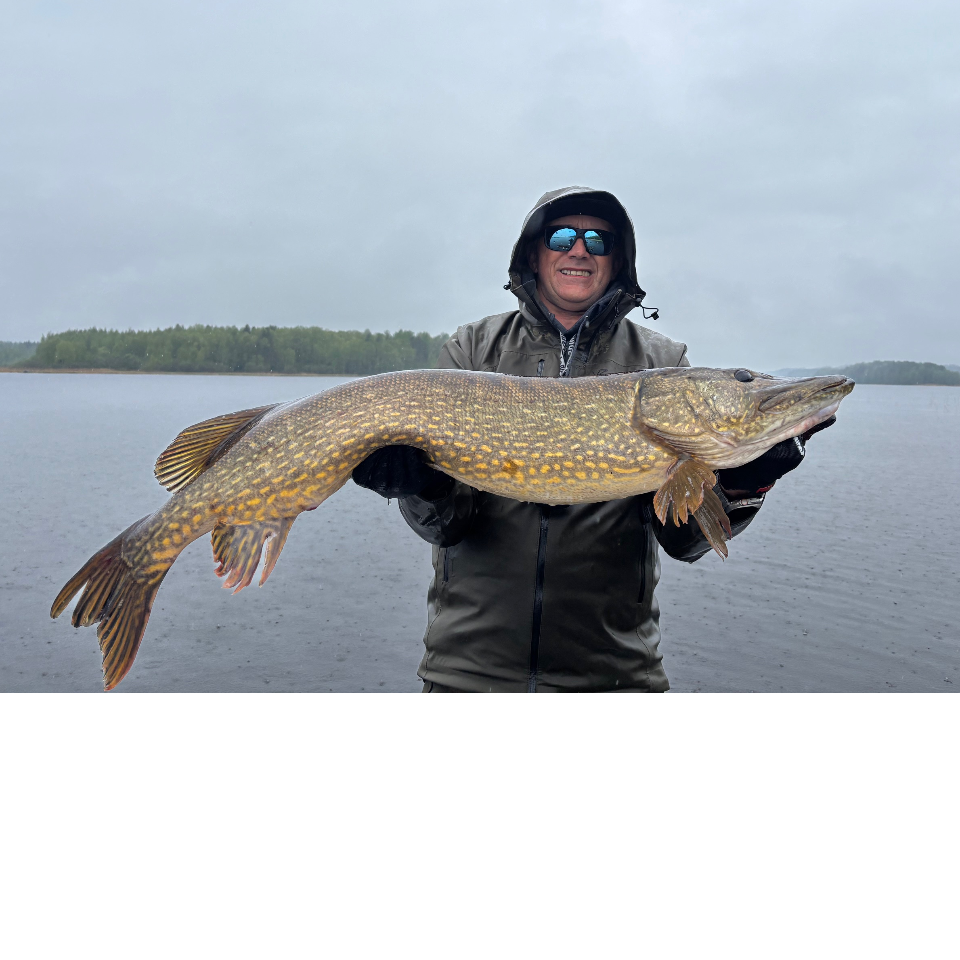
These are the pieces of the spring pike fishing puzzle. From these you build your own formula. Perfect conditions are rare; success depends on reading the signals, interpreting the water, and making smart decisions. If we align the puzzle pieces well, we may become the main character of the adventure — and have stories to tell even to our grandchildren.
Tight lines,
Sándor, GoForBigPike Crew
PS1: Many asked: here are the most used lures by us and our famous pike angling friends in spring:
Soft plastics: Svartzonker McRubber, Pig Shad, Jiggen, Flatnose, Nettel Laken,
SpinFly: Dobb Daddy
Miuras Mouse: Miuras Mouse
Jerkbaits: Buste Jerk, Zalt
Hybrids: Guppie, Svartzonkertail Jr, and the inimitable Svartzonker McTail.




